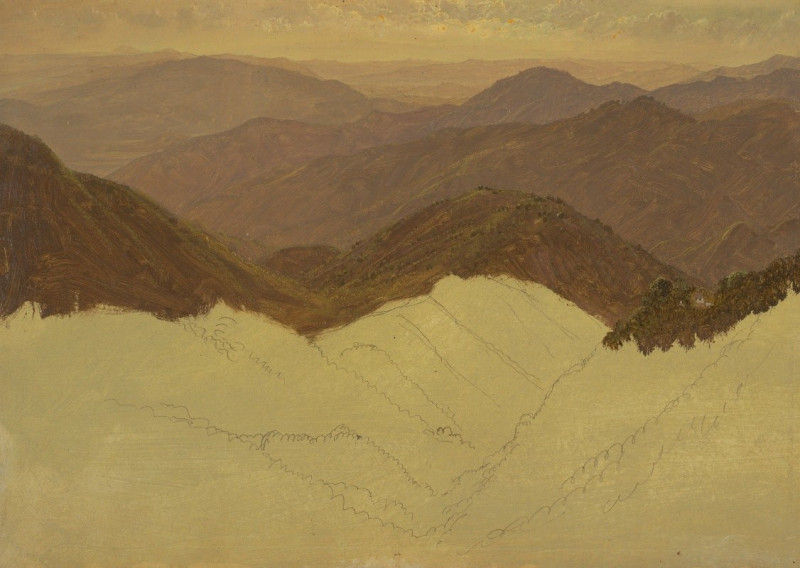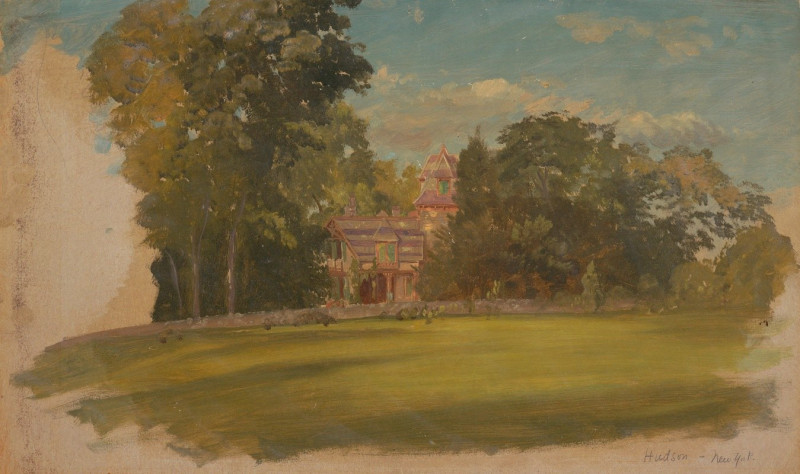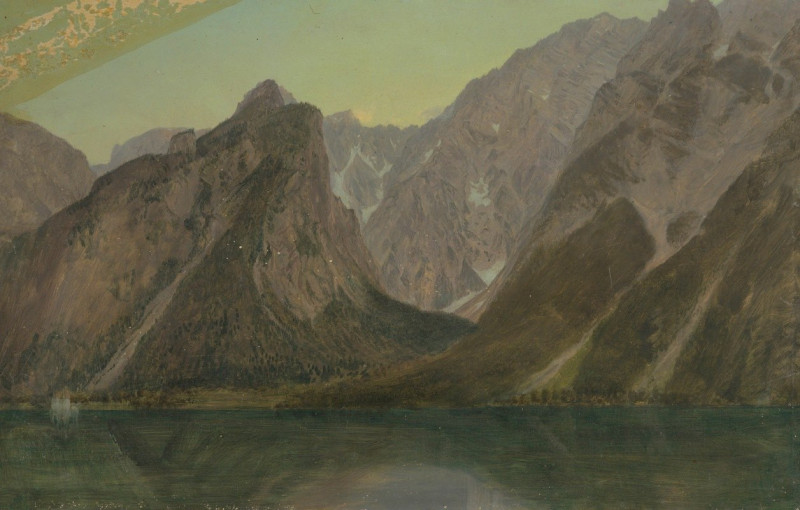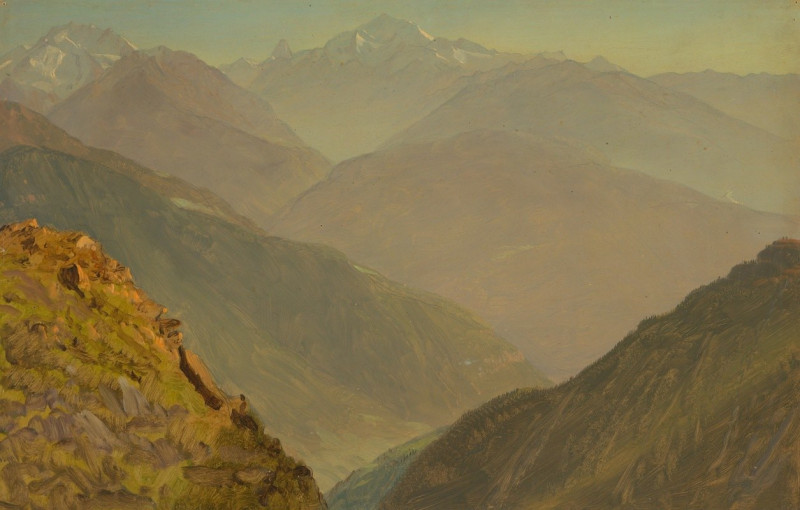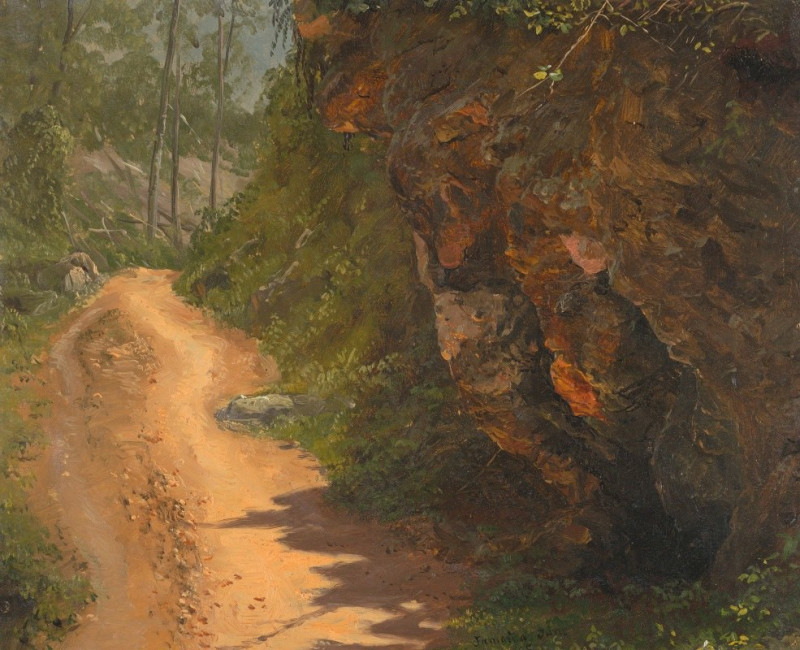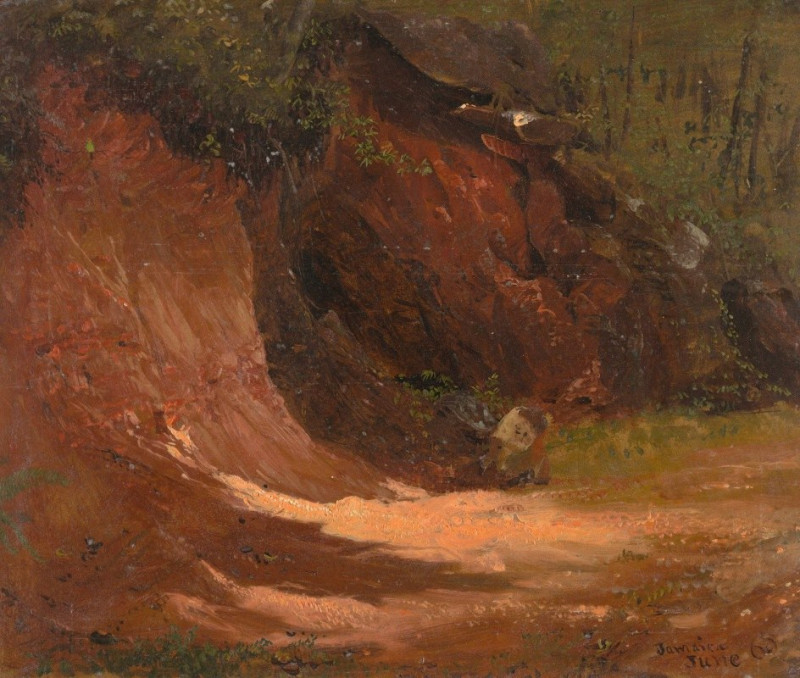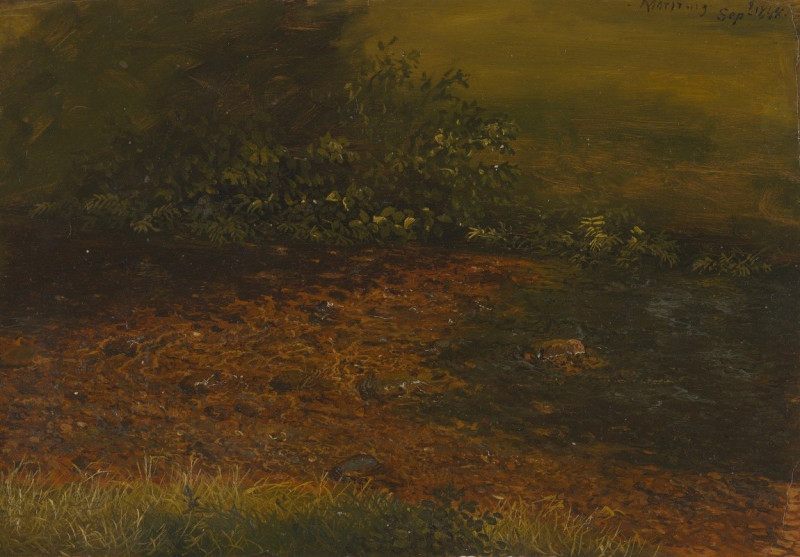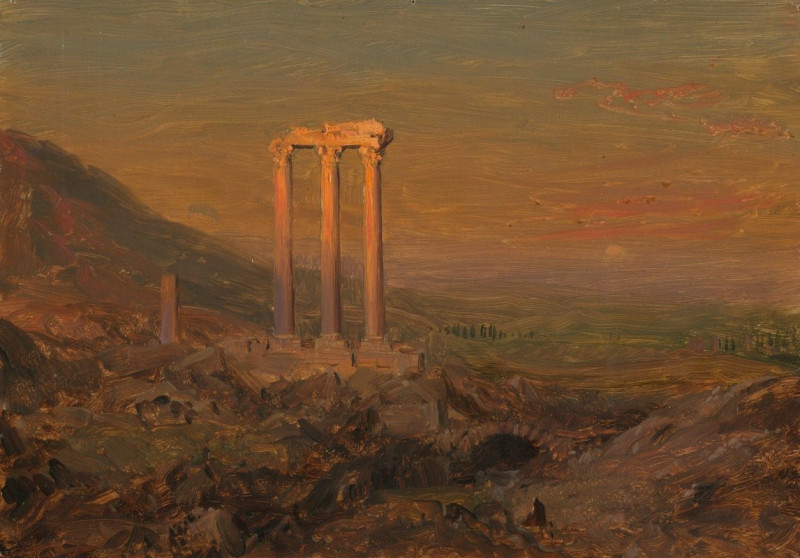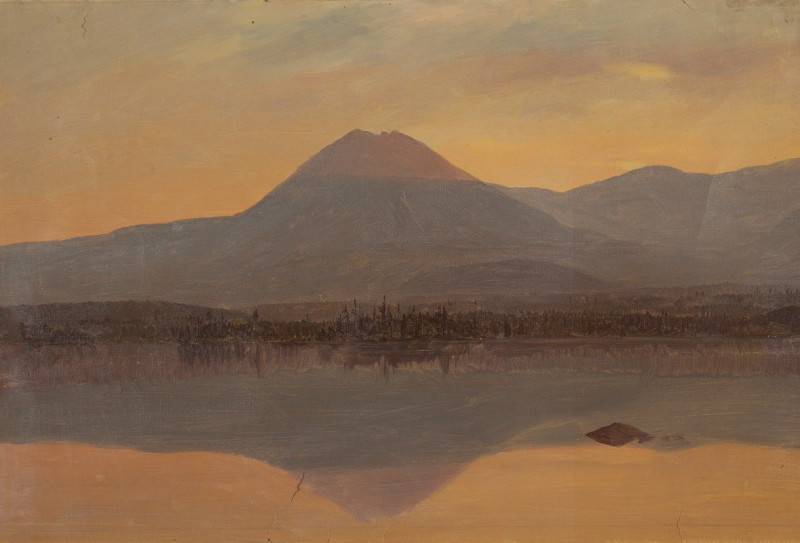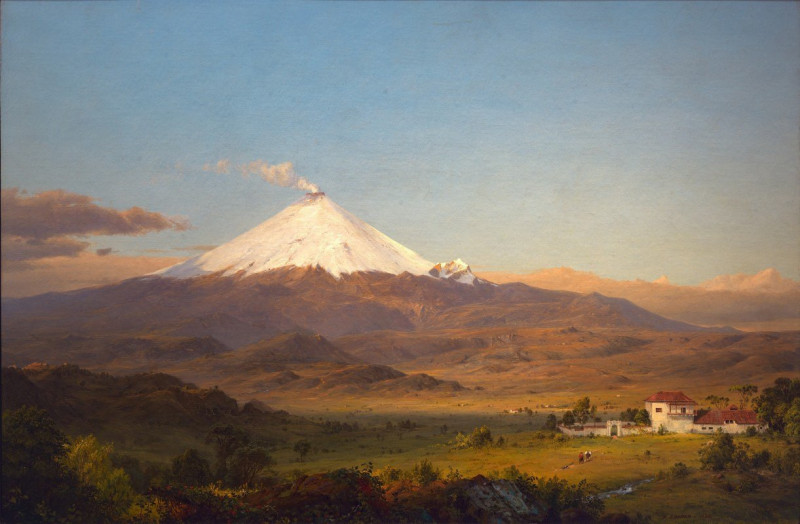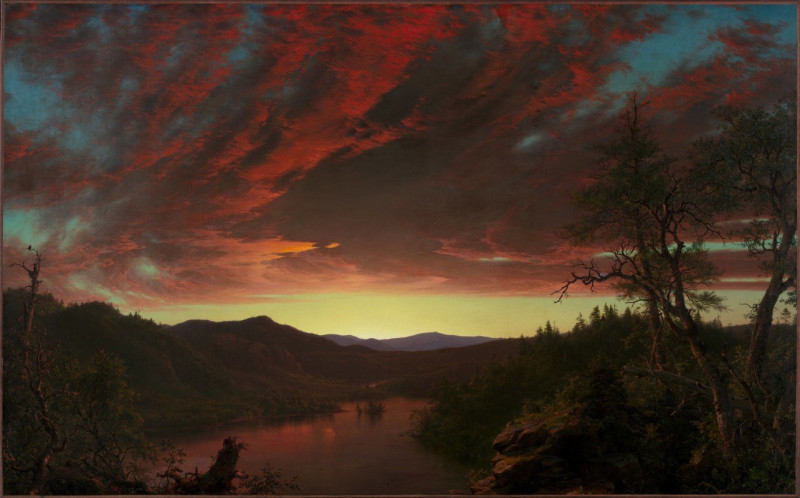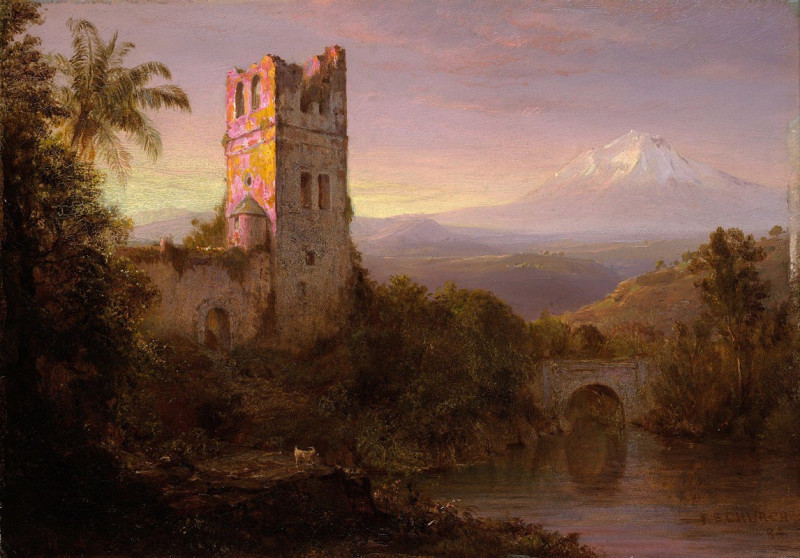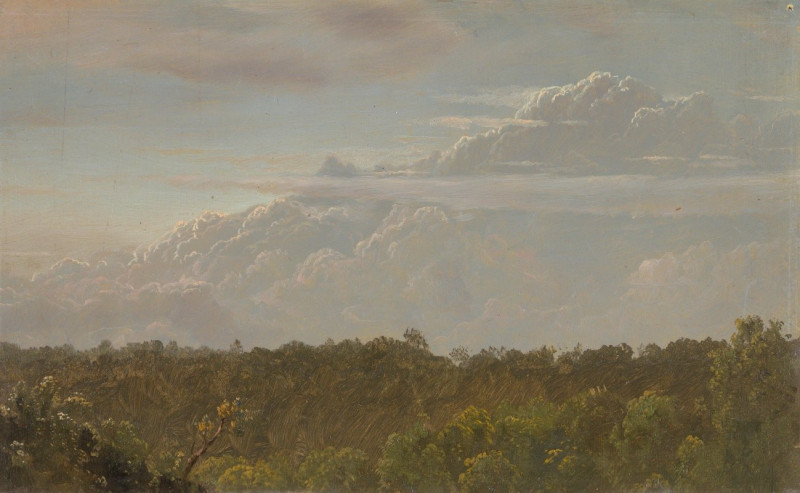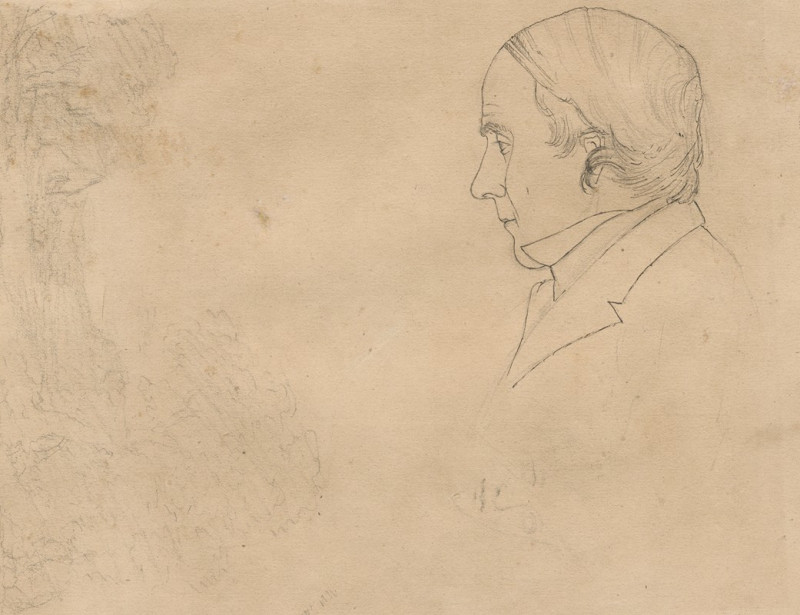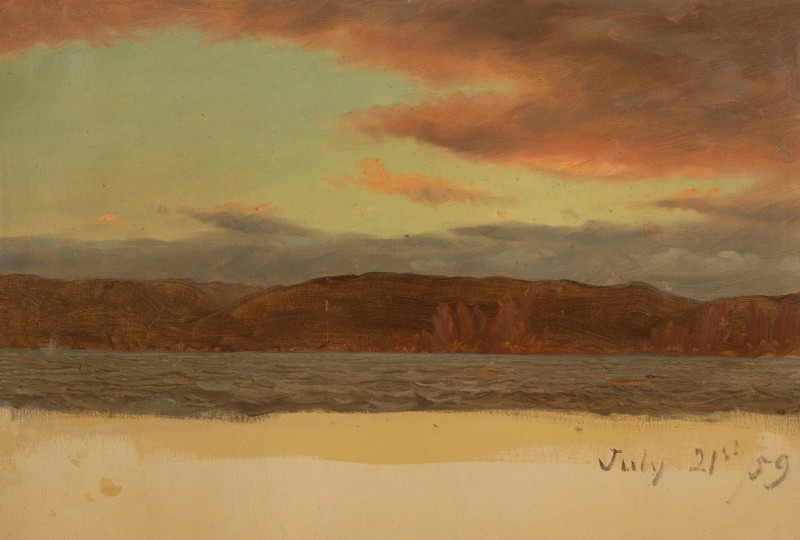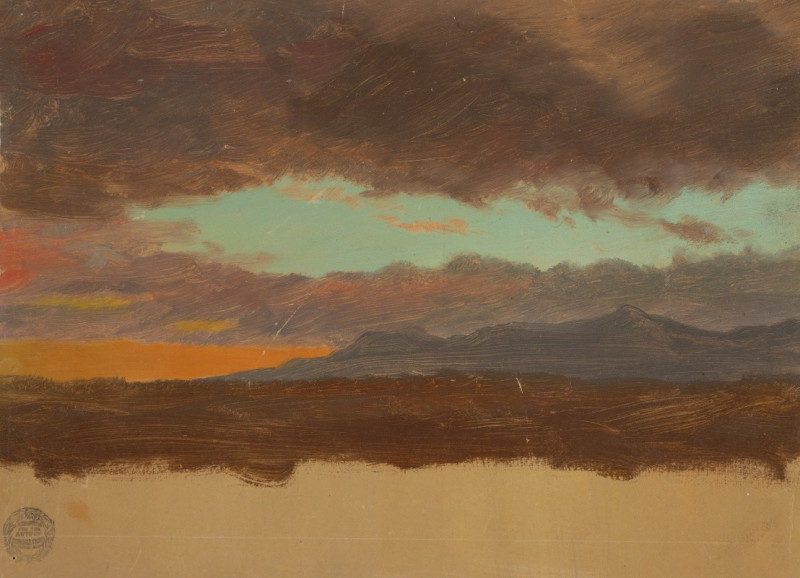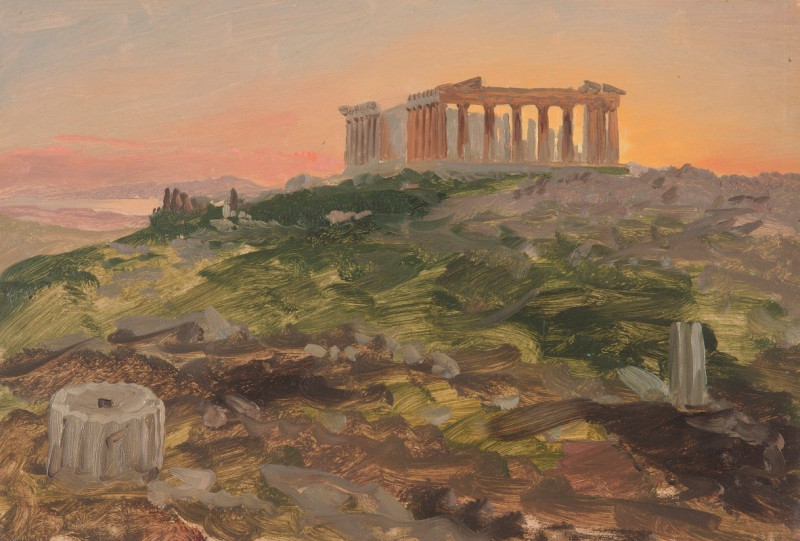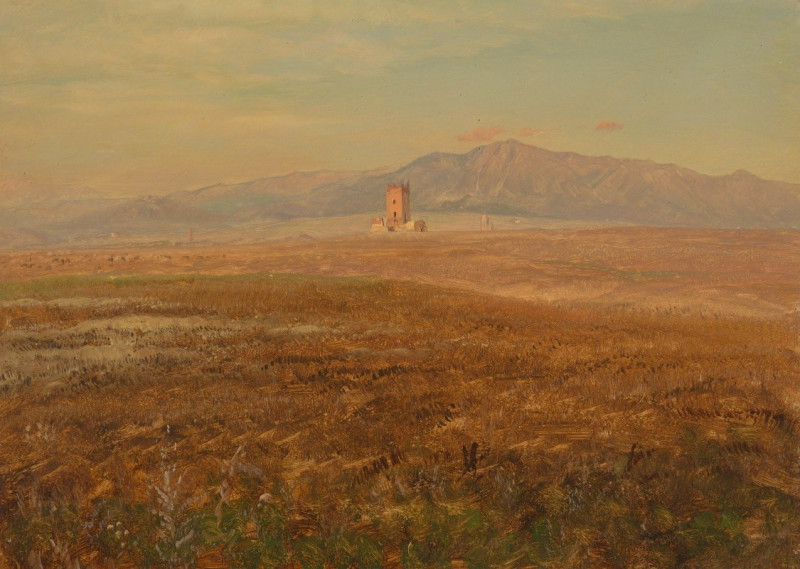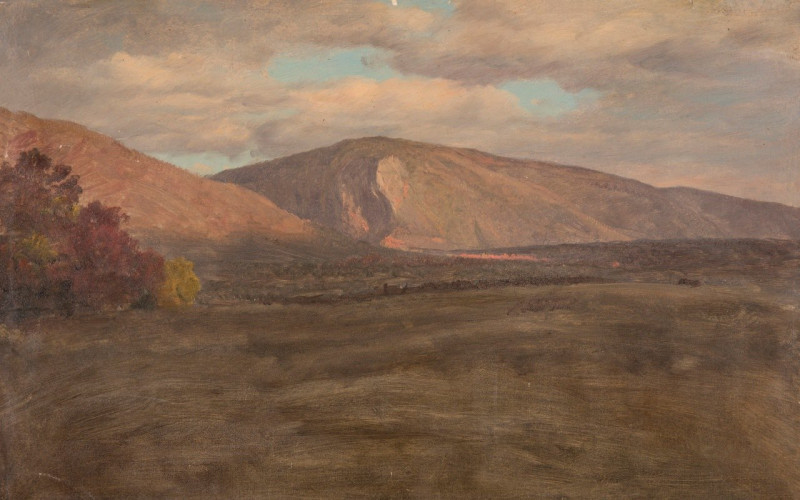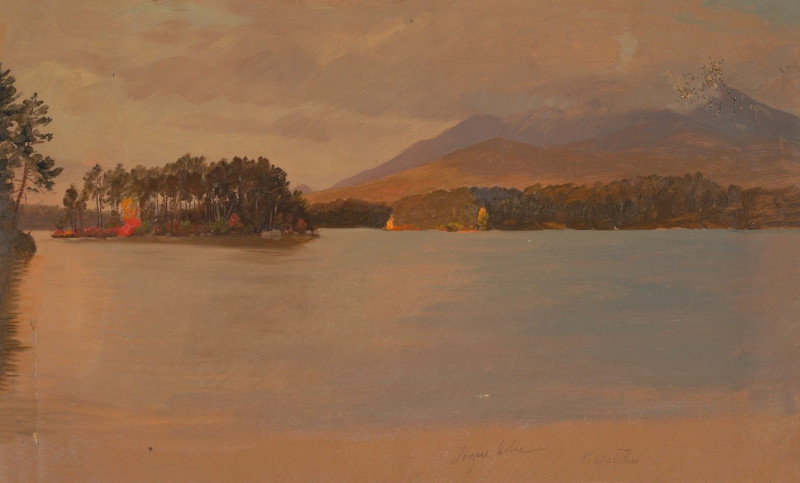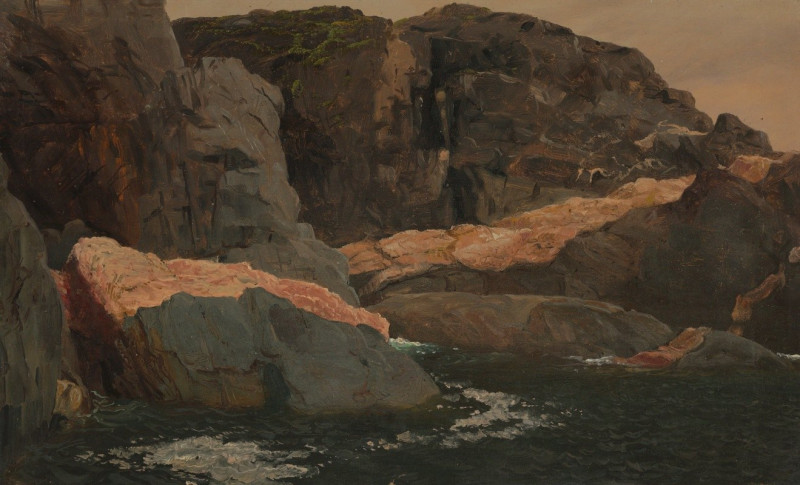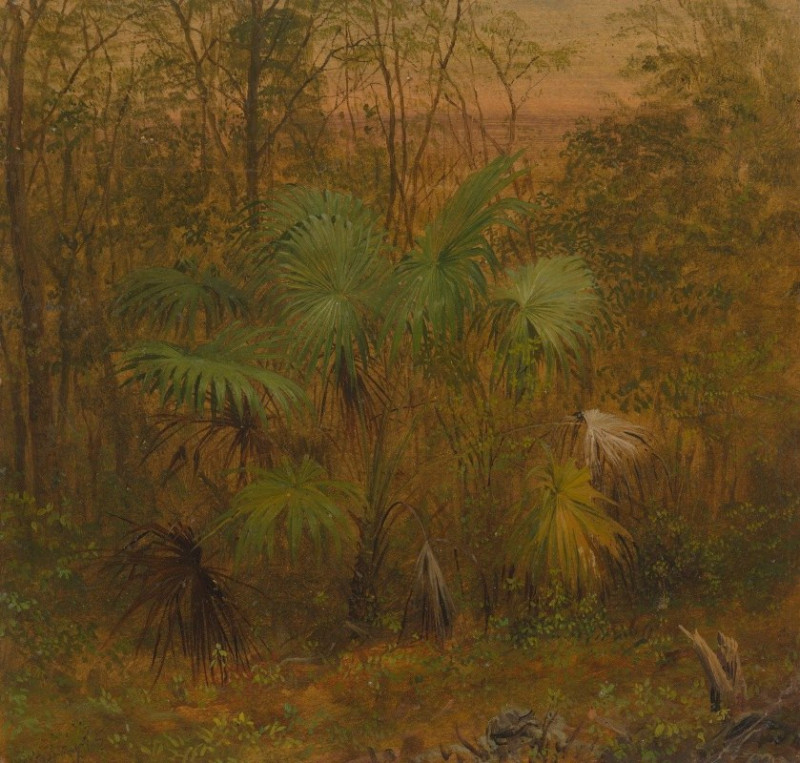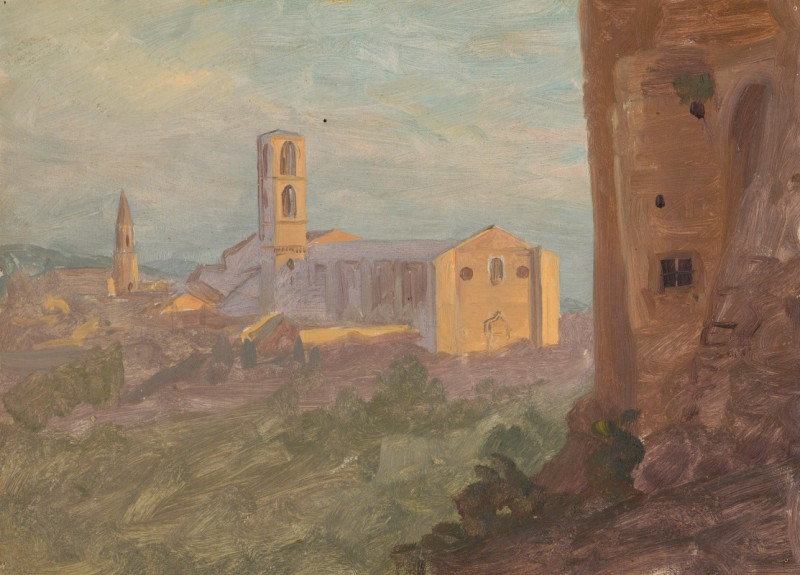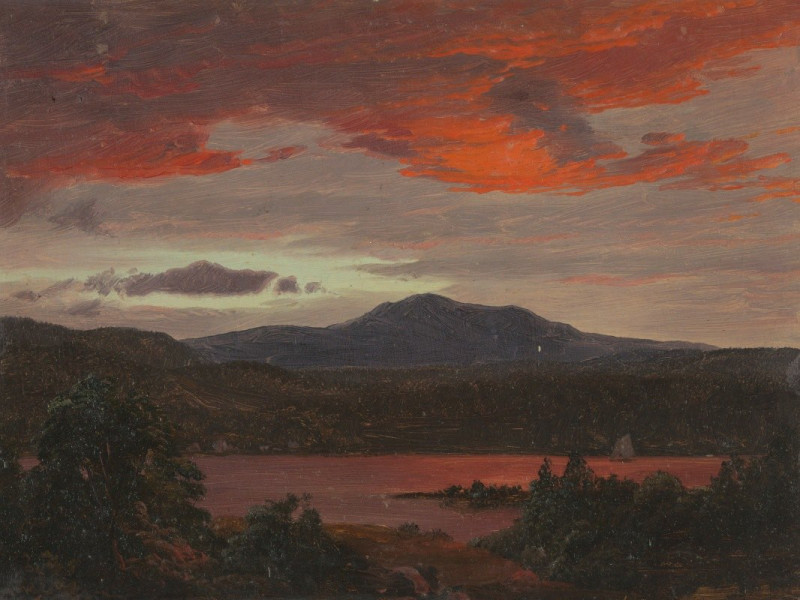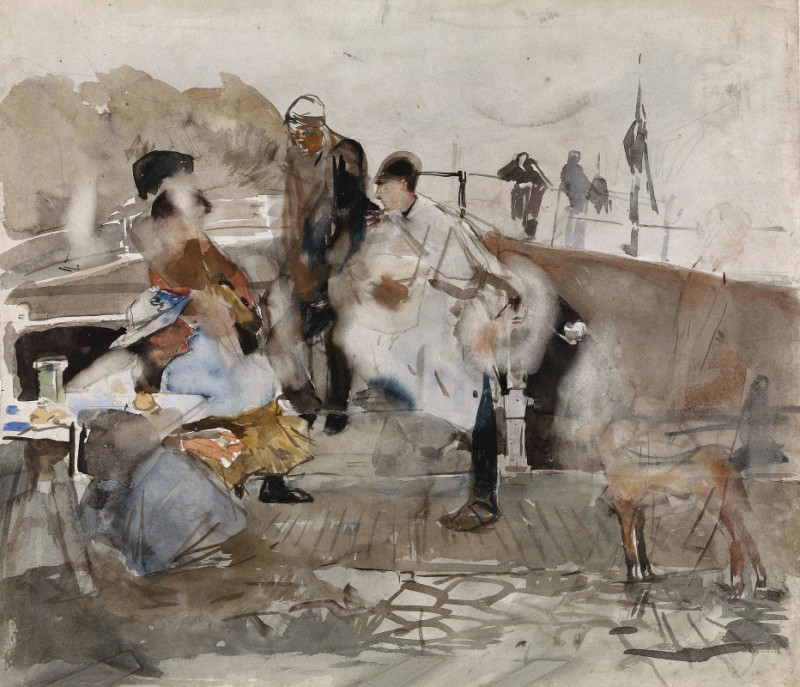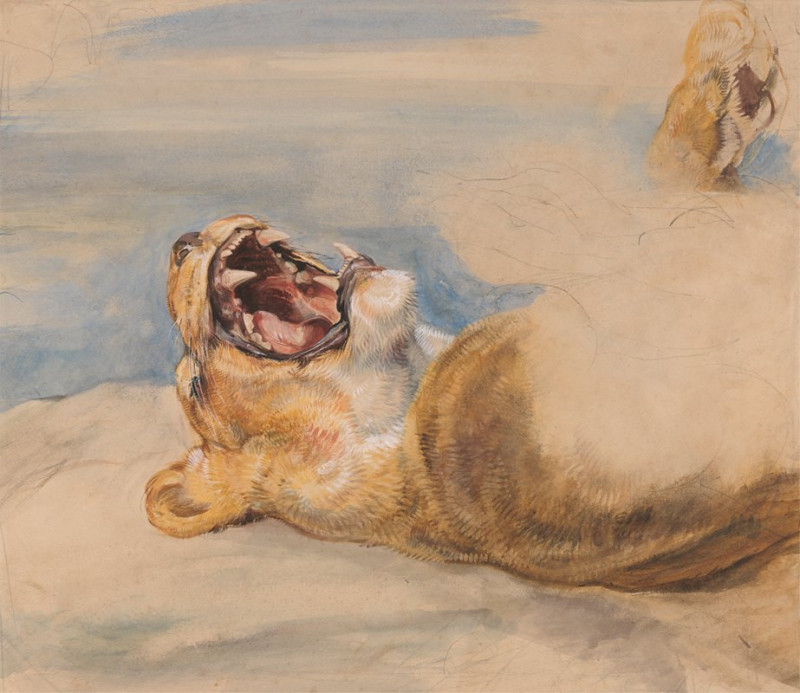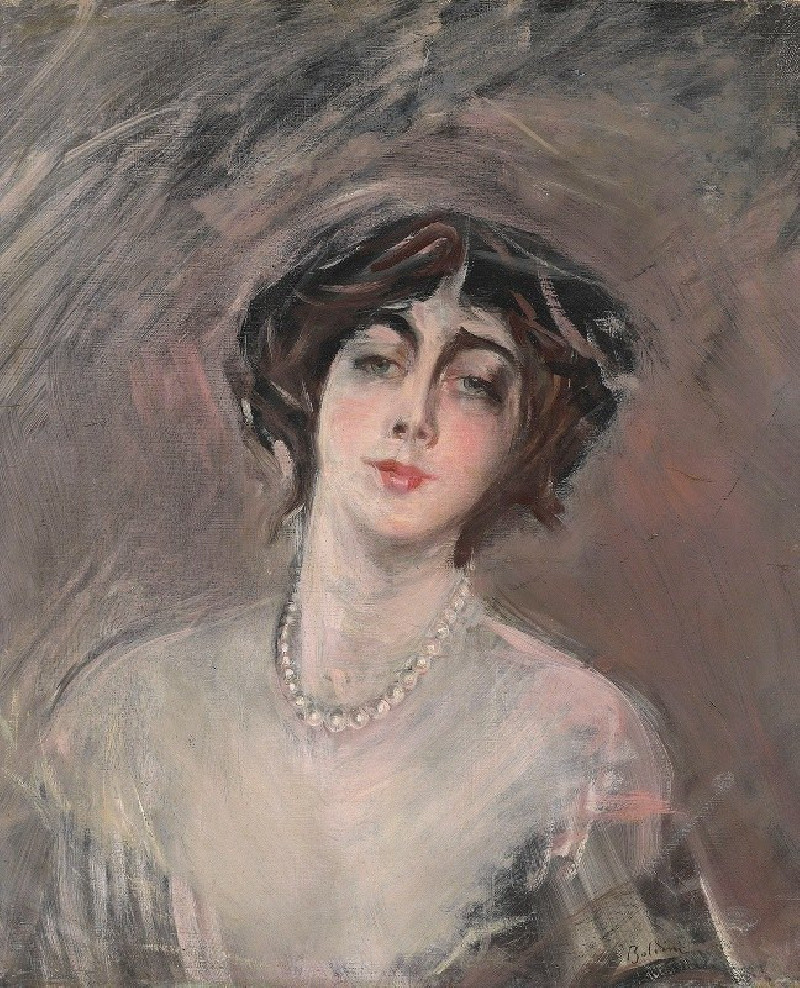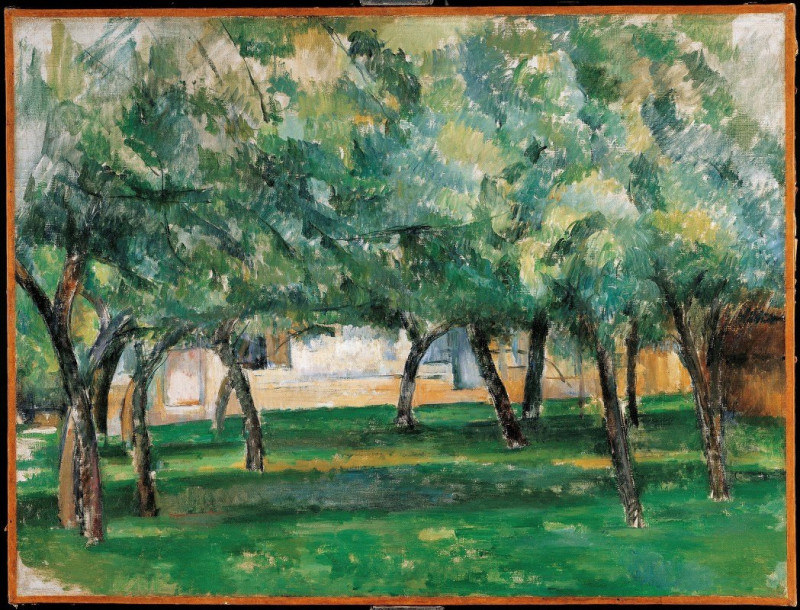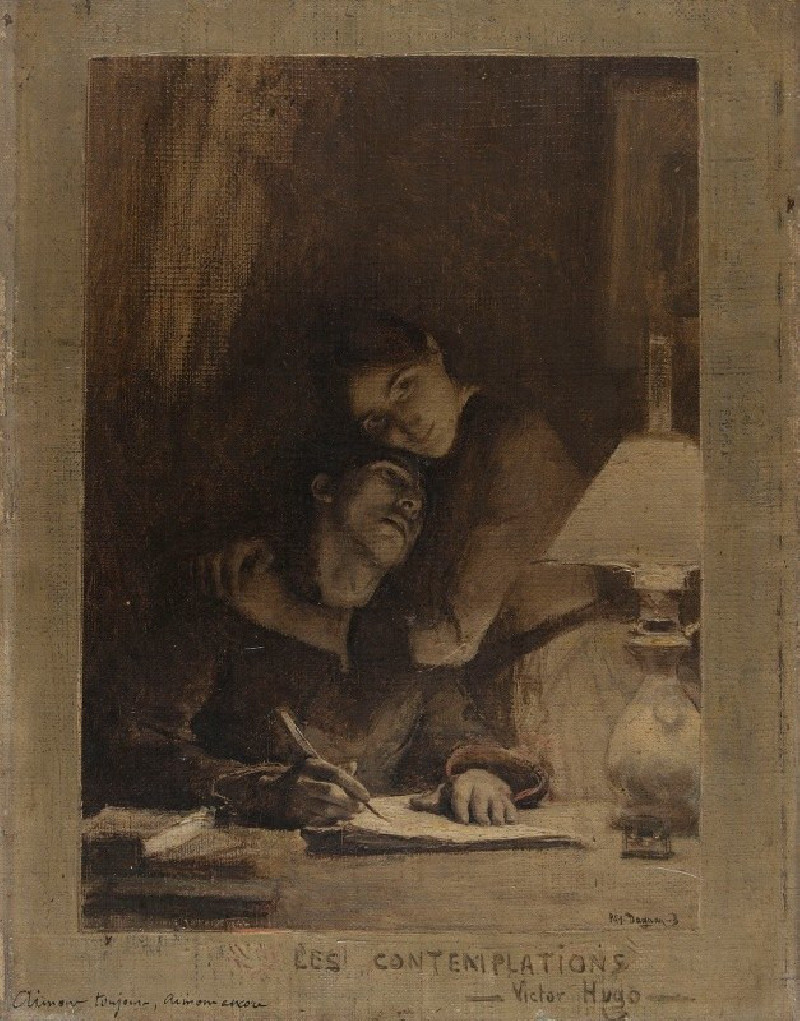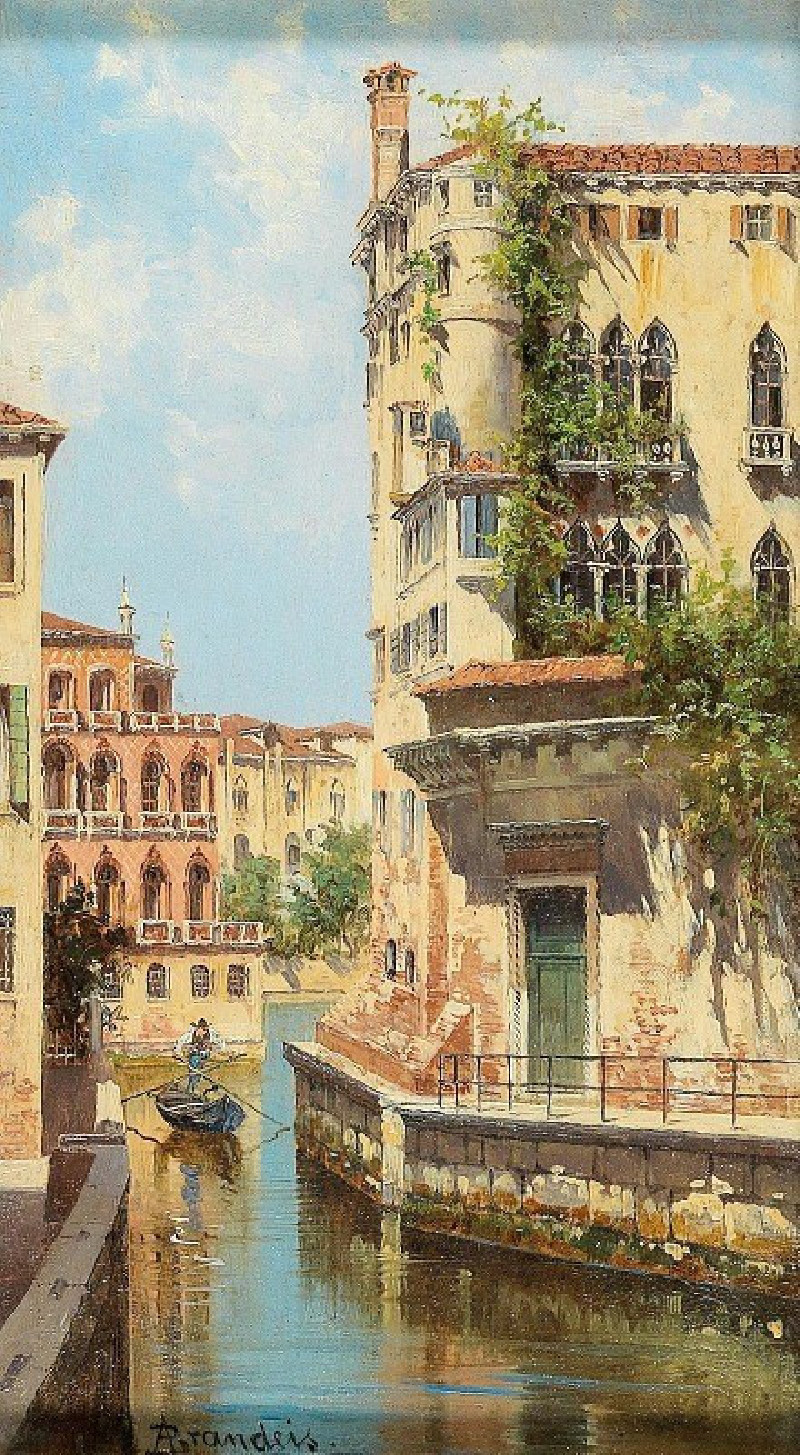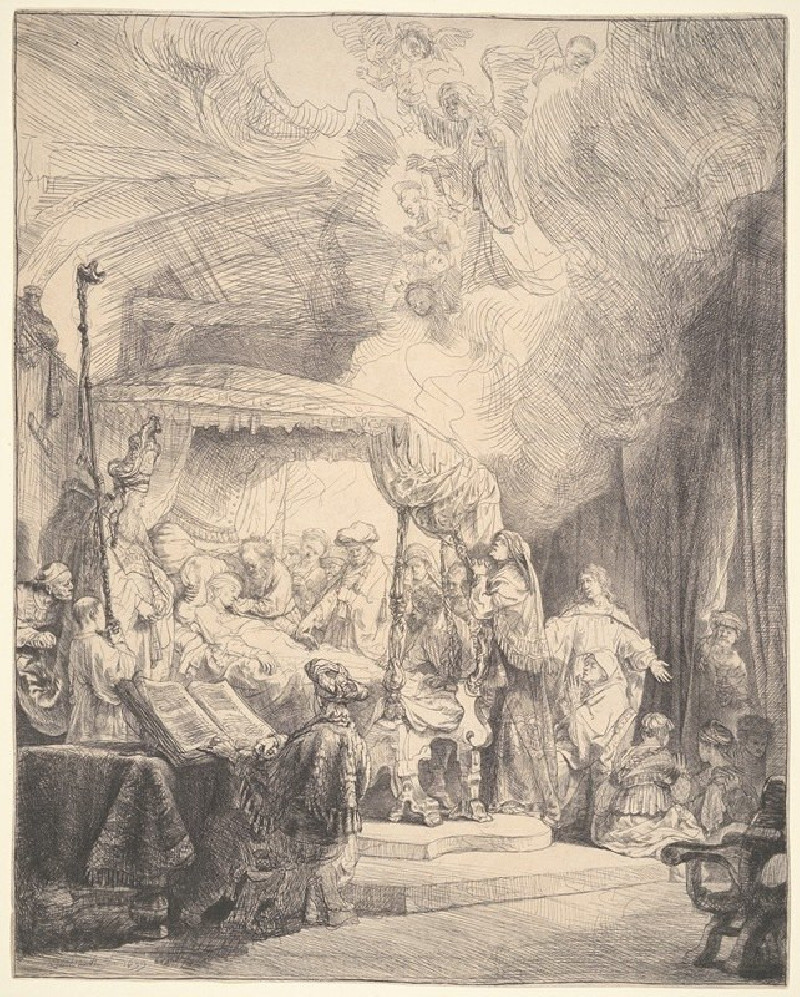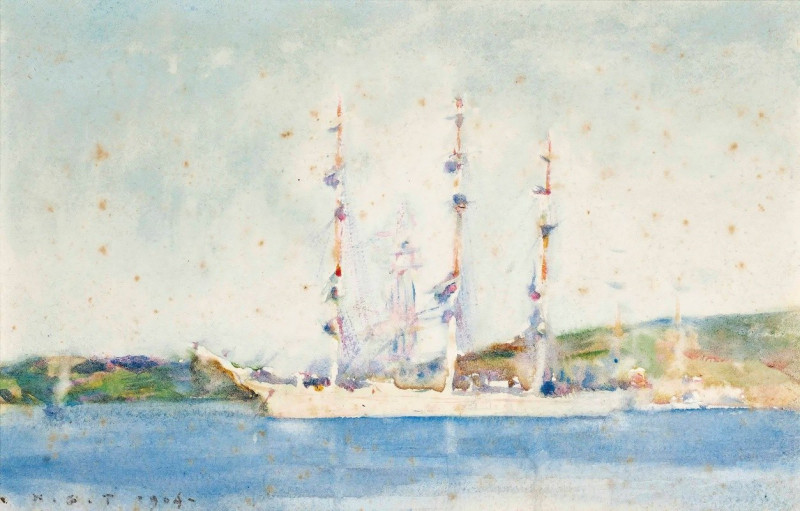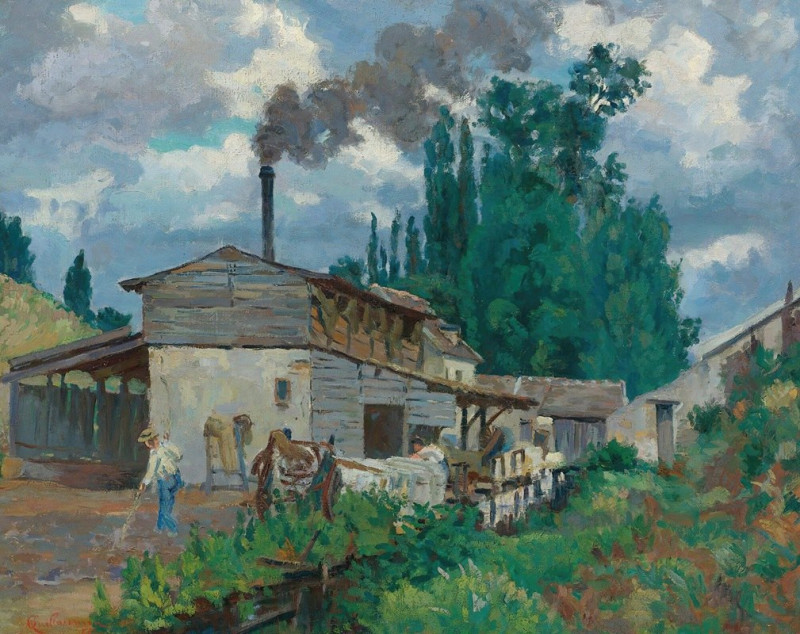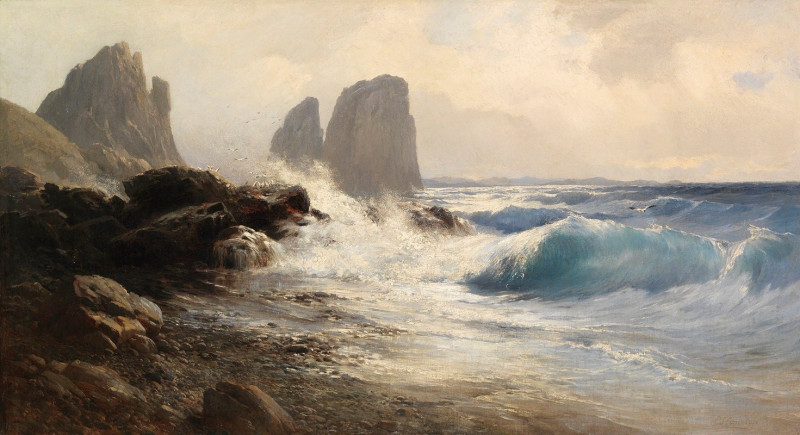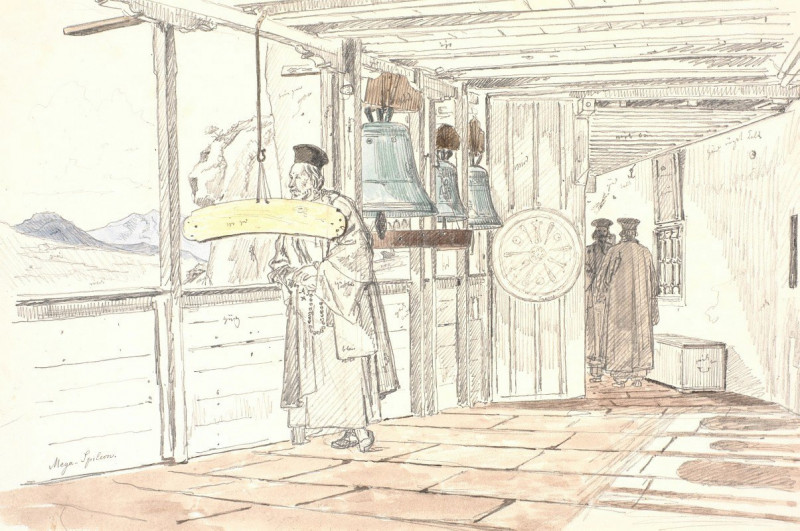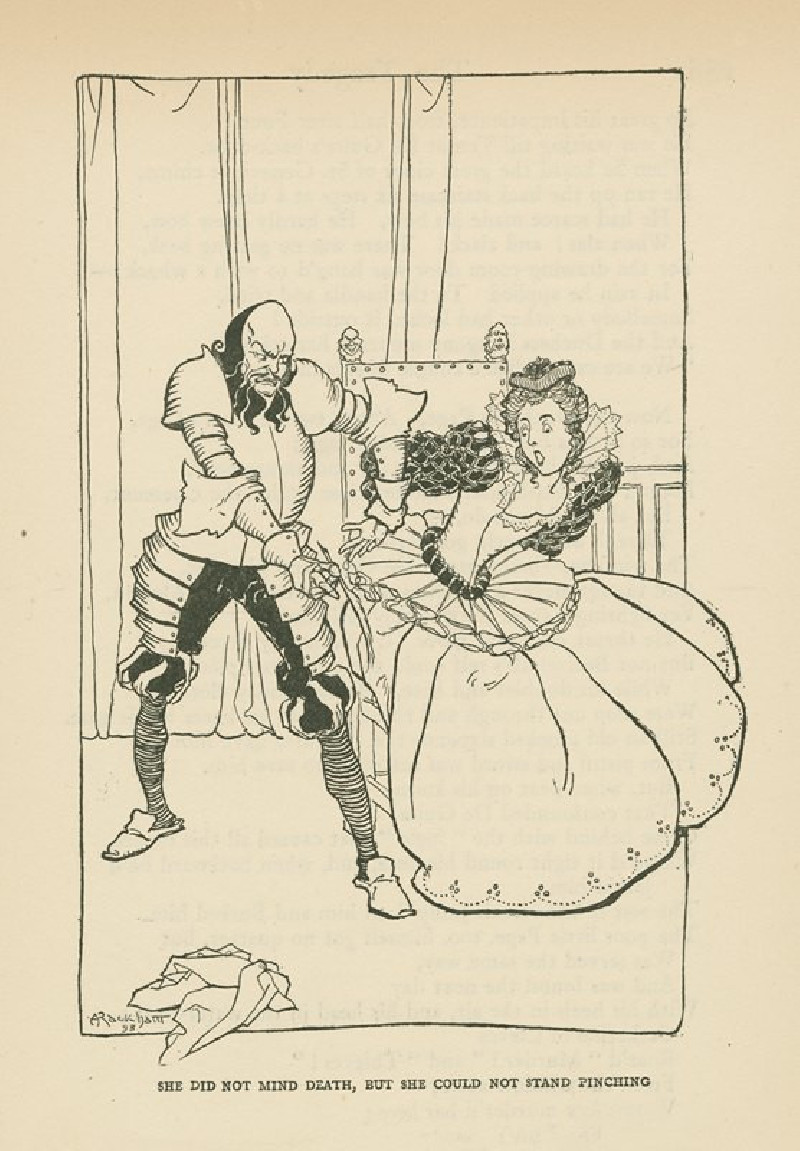Landscape II (1865)
Technique: Giclée quality print
Recommended by our customers
More about this artwork
On Exhibit: Delve into the serene and introspective "Landscape II" (1865) by the acclaimed American landscape painter, Frederic Edwin Church. This painting offers a breathtaking vista of vast mountainous terrain, enveloping the viewer in a sense of both awe and tranquility. Church, known for his detailed and luminous landscapes, captures the rugged beauty of nature with a masterful blend of light and texture.Description: "Landscape II" depicts a series of undulating hills and deep valleys stretching into the horizon. The foreground shows brushstrokes that indicate an unfinished area, revealing the artist's process and adding a layer of intimacy to the scene. The earthy tones of browns, greens, and muted yellows suggest a late afternoon, with the gentle light of a setting sun softening the contours of the mountains. Small clusters of trees punctuate the rugged terrain, their presence amidst the barren slopes highlighting nature's resilience.The distant mountains fade into a hazy blue, creating an illusion of infinite depth and emphasizing the vastness of the landscape. This subtle gradation of color not only adds atmospheric perspective but also evokes a contemplative mood, characteristic of Church's ability to transcend mere scenic depiction."Landscape II" invites viewers to reflect on the enduring beauty of the natural world and Church’s profound reverence for it. It stands as a testament to the artist's skill in using landscape not just to portray beauty, but to evoke emotion and thought.
Delivery
Returns
Frederic Edwin Church (May 4, 1826 – April 7, 1900) was an American landscape painter born in Hartford, Connecticut. He was a central figure in the Hudson River School of American landscape painters, best known for painting large landscapes, often depicting mountains, waterfalls, and sunsets. Church's paintings put an emphasis on realistic detail, dramatic light, and panoramic views. He debuted some of his major works in single-painting exhibitions to a paying and often enthralled audience in New York City. In his prime, he was one of the most famous painters in the United States.

